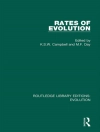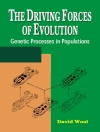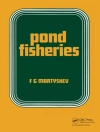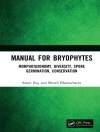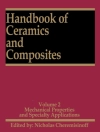Tabella dei contenuti
A TRIBUTE TO PROFESSOR AUTAR SINGH PAINTAL (1925-2004).- Immunolocalization of Tandem Pore Domain K+ Channels in the Rat Carotid Body.- Neuroglobin, a New Oxygen Binding Protein is Present in the Carotid Body and Increases after Chronic Intermittent Hypoxia.- Hypoxia-Inducible Factor (HIF)-1? and Endothelin-1 Expression in the Rat Carotid Body during Intermittent Hypoxia.- Expression of HIF-2? and HIF-3? in the Rat Carotid Body in Chronic Hypoxia.- Modulation of Gene Expression in Subfamilies of TASK K+ Channels by Chronic Hyperoxia Exposure in Rat Carotid Body.- Postnatal Changes in Gene Expression of Subfamilies of TASK K+ Channels in Rat Carotid Body.- Morphological Changes in the Rat Carotid Body in Acclimatization and Deacclimatization to Hypoxia.- Effect of Carbon Dioxide on the Structure of the Carotid Body A comparison between normoxic and hypoxic conditions.- S-Nitrosoglutathione (SNOG) Accumulates Hypoxia Inducible Factor-1? in Main Pulmonary Artery Endothelial Cells but not in Micro Pulmonary Vessel Endothelial Cells.- Changes in Antioxidant Protein SP-22 of Chipmunk Carotid Bodies during the Hibernation Season.- Potential Role of Mitochondria in Hypoxia Sensing by Adrenomedullary Chromaffin Cells.- Localization of Ca/Calmodulin-Dependent Protein Kinase I in the Carotid Body Chief Cells and the Ganglionic Small Intensely Fluorescent (SIF) Cells of Adult Rats.- Dual Origins of the Mouse Carotid Body Revealed by Targeted Disruption of Hoxa3 and Mash1.- Genetic Regulation of Chemoreceptor Development in DBA/2J and A/J Strains of Mice.- Genetic Influence on Carotid Body Structure in DBA/2J and A/J Strains of Mice.- The Effect of Hyperoxia on Reactive Oxygen Species (ROS) in Petrosal and Nodose Ganglion Neurons during Development (Using Organotypic Slices).-Carotid Body Volume in Three-Weeks-Old Rats Having an Episode of Neonatal Anoxia.- The Effect of Development on the Pattern of A1 and A2a-Adenosine Receptor Gene and Protein Expression in Rat Peripheral Arterial Chemoreceptors.- A Comparative Study of the Hypoxic Secretory Response between Neonatal Adrenal Medulla and Adult Carotid Body from the Rat.- In Search of the Acute Oxygen Sensor.- Does AMP-activated Protein Kinase Couple Inhibition of Mitochondrial Oxidative Phosphorylation by Hypoxia to Pulmonary Artery Constriction?.- Function of NADPH Oxidase and Signaling by Reactive Oxygen Species in Rat Carotid Body Type I Cells.- Hypoxemia and Attenuated Hypoxic Ventilatory Responses in Mice Lacking Heme Oxygenase-2.- Regulation of a TASK-like Potassium Channel in Rat Carotid Body Type I Cells by ATP.- Accumulation of Radiolabeled N-Oleoyl-Dopamine in the Rat Carotid Body.- Profiles for ATP and Adenosine Release at the Carotid Body in Response to O2 Concentrations.- Hypoxic Regulation of Ca2+ Signalling in Astrocytes and Endothelial Cells.- Does AMP-activated Protein Kinase Couple Hypoxic Inhibition of Oxidative Phosphorylation to Carotid Body Excitation?.- Mitochondrial ROS Production Initiates A?1-40-Mediated Up-Regulation of L-Type Ca2+ Channels during Chronic Hypoxia.- Acute Hypoxic Regulation of Recombinant THIK-1 Stably Expressed in HEK293 Cells.- Differential Expression of Oxygen Sensitivity in Voltage-Dependent K Channels in Inbred Strains of Mice.- An Overview on the Homeostasis of Ca2+ in Chemoreceptor Cells of the Rabbit and Rat Carotid Bodies.- Midbrain Neurotransmitters in Acute Hypoxic Ventilatory Response.- Chronic Intermittent Hypoxia Enhances Carotid Body Chemosensory Responses to Acute Hypoxia.- The Cell-Vessel Architecture Model for the Central Respiratory Chemoreceptor.- Loop Gain of Respiratory Control upon Reduced Activity of Carbonic Anhydrase or Na+/H+ Exchange.- Adrenaline Increases Carotid Body CO2 Sensitivity: An in vivo Study.- Peripheral Chemoreceptor Activity on Exercise-Induced Hyperpnea in Human.- Effects of Low-Dose Methazolamide on the Control of Breathing in Cats.- Stimulus Interaction between Hypoxia and Hypercapnia in the Human Peripheral Chemoreceptors.- Gene Expression and Signaling Pathways by Extracellular Acidification.- Hypoxic Modulation of the Cholinergic System in the Cat Carotid Glomus Cell.- Are There “CO2 Sensors” in the Lung?.- Nitric Oxide in Brain Glucose Retention after Carotid Body Receptors Stimulation with Cyanide in Rats.- Pulmonary Nociceptors are Potentially Connected with Neuroepithelial Bodies.- Modulators of Cat Carotid Body Chemotransduction.- Identification and Characterization of Hypoxia Sensitive Kv? Subunits in Pulmonary Neuroepithelial Bodies.- Voltage-Dependent K Channels in Mouse Glomus Cells are Modulated by Acetylcholine.- Modification of the Glutathione Redox Environment and Chemoreceptor Cell Responses.- Carotid Body Transmitters Actions on Rabbit Petrosal Ganglion in Vitro.- Potassium Channels in the Central Control of Breathing.- Role of Endothelin-1 on the Enhanced Carotid Body Activity Induced by Chronic Intermittent Hypoxia.- Concluding Remarks.


